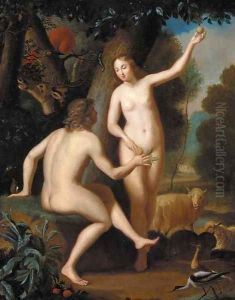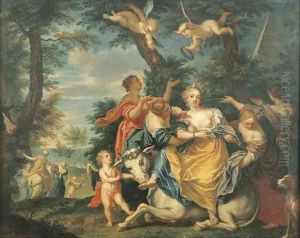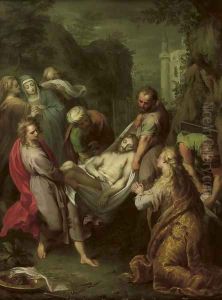Balthazar Beschey Paintings
Balthazar Beschey was a prominent figure in the Flemish art scene of the 18th century, known for his contributions as a painter, draughtsman, and art dealer. Born in Antwerp on February 5, 1708, into a family with artistic connections—his brothers were also involved in the arts—he was part of the vibrant cultural life of the city, which was a significant center for art and commerce in Europe at the time. Beschey was not only a creator but also an educator, playing a crucial role in the development of the next generation of artists as a teacher at the Royal Academy of Fine Arts in Antwerp, an institution that was central to the artistic life of the city.
Throughout his career, Balthazar Beschey specialized in history paintings, which depicted scenes from the Bible, mythology, and ancient history, as well as landscapes and portraits. His style was deeply influenced by the Baroque tradition, particularly the works of Peter Paul Rubens, which is evident in his dynamic compositions, vibrant color palette, and the emotional intensity of his figures. However, Beschey also incorporated elements of the emerging Rococo style, with its lighter subjects and more playful approach to form and color, reflecting the changing tastes of his time.
In addition to his painting, Beschey was active in the art market, dealing in paintings and other artworks. This role provided him with a broad network within the art community in the Low Countries and beyond, and he was known for his expertise in the valuation of artworks. His involvement in the art market also allowed him to amass a significant collection of his own, which included works by both contemporary artists and old masters.
Balthazar Beschey's legacy is preserved in his contributions to the Royal Academy of Fine Arts, his influence on the students he taught, and the paintings he left behind, many of which are housed in museums and private collections around the world. He died in Antwerp on November 28, 1776, leaving behind a body of work that continues to be studied and appreciated for its artistic merit and historical significance. Beschey's career exemplifies the interconnected roles of artist, teacher, and dealer in the 18th-century European art world, highlighting the multifaceted nature of artistic practice during this period.


